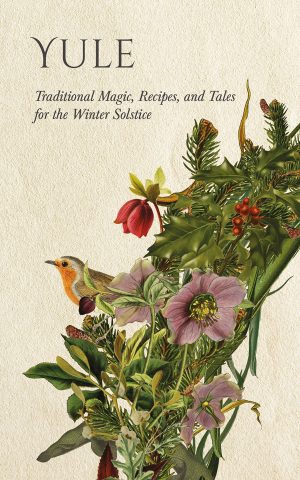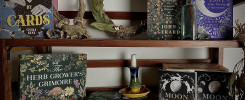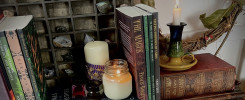When we think of Father Christmas, we often picture a jolly, red-cloaked man with a sack full of presents and a herd of reindeer guiding his sleigh across the Winter sky. But what if we told you that the original Father Christmas is far from the merry gift-bringer we know today? Join us as we explore the possibility of the ancient Norse god, Odin, being one of the earliest inspirations for the modern-day Santa Claus.
Who Is Odin?
In Norse mythology, Odin is a complex figure, a wise wanderer, a seeker of knowledge, and a god of war and magic. Often depicted as a tall, mysterious man with a long white beard, he wore a hooded cloak, roamed the world with a staff, and could be both welcoming and fearsome. Known for his magical prowess, Odin had many names and personas, but it was his role in the Wild Hunt and his connection to the Winter Solstice that likely inspired later depictions of Santa Claus, potentially making him the original Father Christmas.
Similarities Between Odin and Father Christmas
The Wild Hunt and Food Offerings
During the cold nights of Midwinter, Odin led a ghostly procession known as the Wild Hunt. Mounted on his eight-legged steed, Sleipnir, Odin rode through the sky, accompanied by an entourage of spirits, gods, and mystical creatures. It was tradition to leave offerings of food and drink on your doorstep to appease Odin and his spectral company, seeking protection and favour.
This practice of leaving offerings is reminiscent of leaving milk and mince pies out for Father Christmas, one of the many remnants of old customs carried forward into modern festive traditions.
Sleipnir and Rudolph
Odin’s magical horse is another reason the Norse god is often speculated as being the original Father Christmas. Bearing many similarities to the leading reindeer of Santa Claus’ sleigh, Rudolph, Sleipnir could travel great distances at an incredible speed, galloping through the air. Just as Sleipnir assists Odin in navigating the Wild Hunt, Rudolph’s glowing nose guides Father Christmas’ sleigh through the foggy night sky on Christmas Eve.
Gifts Bearers
Similarly to Father Christmas’ gift-bringing image, Odin was revered as a god who shared gifts of knowledge, poetry, and wisdom. During Yule, people sought his blessing and guidance as they prepared for the harsh months of Winter. The gifts were often profound, symbolic, and transformative, intended as tools to navigate life’s challenges. In contrast, Father Christmas is known for his tradition of bringing material gifts, often focused on joy and goodwill, especially for children.
Odin’s Evolution as the Original Father Christmas
Saint Nicholas is crucial to the development of Odin as the original Father Christmas. As Christianity spread across Northern Europe, Christian and Pagan traditions began to merge. Early Christian missionaries found that incorporating elements of local customs made it easier to convert Pagan communities. Saint Nicholas, a fourth-century bishop known for his generosity, was merged with traditions of Odin, becoming a central figure in Christian tradition as the patron saint of children and gift-giving.
Although Santa’s long, white beard, clothes, and hat are echoes of Odin’s depictions as a bearded, elderly man in an earth-toned cloak and wide-brimmed hat, Father Christmas’ iconic red look can be partly attributed to Saint Nicholas’ red robes. Although it wasn’t until the 1930s when Coca-Cola’s depictions of Father Christmas in their advertisements popularised his familiar red suit, and plump, jolly appearance.
A Modern Reminder of Ancient Magic
Remembering Odin as the ‘original Father Christmas’ brings a touch of ancient magic into our modern Winter celebrations. This ancient figure connects us to the long lineage of Midwinter traditions that celebrate light and generosity.
This Yule season, as you leave a small offering of food or drink on Christmas Eve, think not just of Father Christmas, but also of Odin on his Wild Hunt, a timeless figure of wisdom, joy, and Winter magic.
If you enjoyed this blog post, read an extended version on our Substack.
Discover more about the Yuletide magic of Midwinter in our Wyrd Sabbat Guide: Yule…
A magical guide to the most festive Sabbat celebration, Yule. Gather in the heart of Winter and explore the ancient traditions and practices Yuletide has to offer as we honour the rebirth of the Sun.




